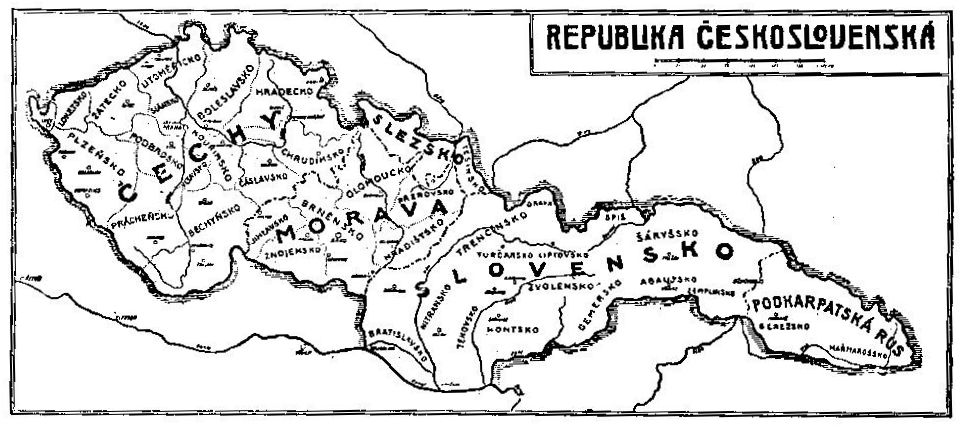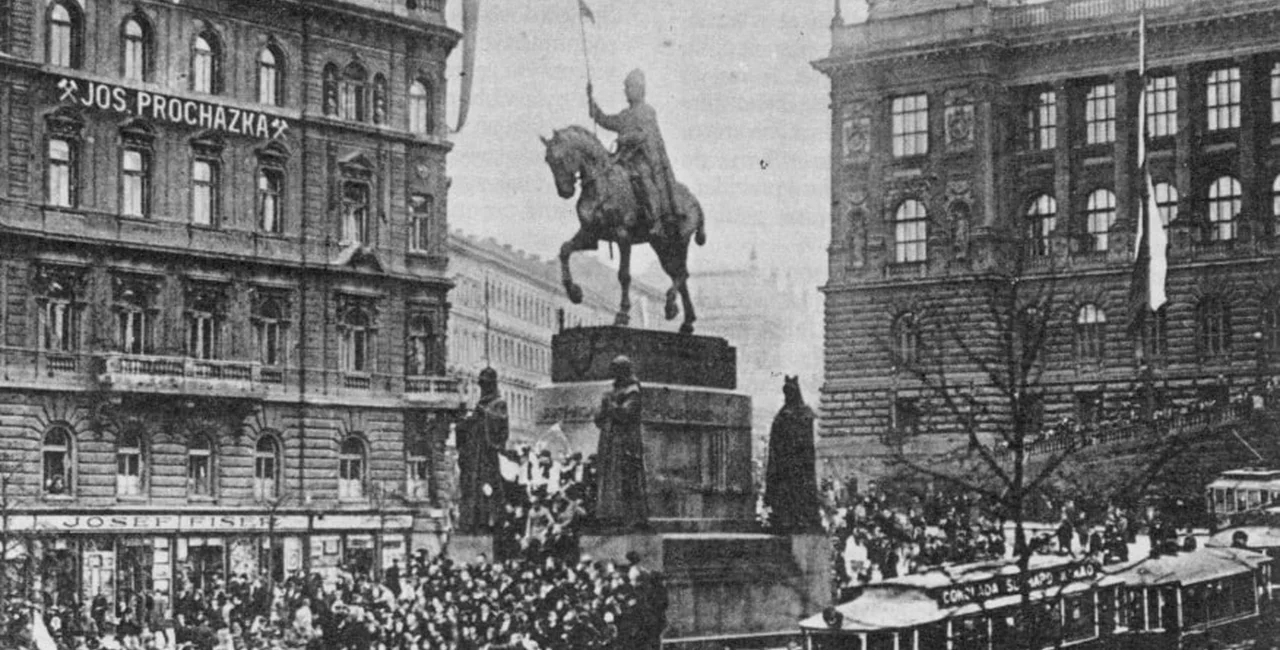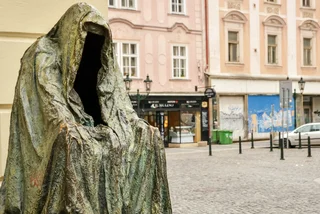This Sunday, October 28, 2018, marks the 100th anniversary of Czech statehood; below, a timeline of events leading up to and following Czechoslovak independence:
Tomáš Garrigue Masaryk stood by the cradle
When Czechoslovakia was declared on 28 October 1918 and Prague became the new State Capital, it was a dream come true for generations of Czechs and Slovaks living under the Hapsburg monarchy. The birthright of Czech statehood was finally fulfilled. Albeit helped by the ‘Great War’, the independence drive was largely down to the Czechs and Slovaks themselves. Their quest for statehood took concrete form when expressed by Tomáš Garrigue Masaryk, a respected University Professor with key contacts in the USA and the UK. He was at that time living in exile, just beyond the Austro-Hungarian borders, where he, with a handful of supporters, began a campaign for independence. Chief among them were trusted friends Milan Rastislav Štefánik and Edvard Beneš.
An important role was played by the Triple Entente powers. Their victory in the war was a necessary prerequisite for success. Hence the Czechoslovak effort to form military Legions, especially in Russia, France, and Italy, to support the Allied armies. In Paris, meanwhile, in February 1916, the Czechoslovak National Council was established, to represent the prospective State. Over time, it becomes a widely recognized provisional Government. Masaryk’s project also had significant backing in the USA among Czech and Slovak diaspora, although the most fundamental, and for some decisive support came from President Woodrow Wilson.

The ‘Czech Maffia’
Back home, too, people were ready to help the resistance. The ‘Czech Maffia’ group sourced and gave crucial information and finance. Finally, on Twelfth Night at the start of 1918, the domestic political scene publicly signed up to the action abroad with the Three Kings Declaration. Most of the former parliamentarians under the guise of the Czechoslovak National Committee prepared to take power. The final incendiary spark for revolutionary change came from an ordinary news report on the Entente capitulation of Austria-Hungary.
Independent Czechoslovakia at last
From the first moments of its existence, the fledgling State sided with European democracy. This was underpinned by a broad spectrum of political parties, prominent intellectual public figures, headed by President Masaryk, the Sokol movement, and a wealth of cultural and social activities. The multinational mix of the then 13-million strong Republic hinted that all would not go smoothly. Although the historic boundaries were upheld, an important land reform established, a strong currency created and successful industry redeveloped, many problems simmered on. It soon became clear how fragile was the international stability of the Versailles peace in Europe. Not even a mutual treaty with France was to save Czechoslovakia from aggressive Nazi demands.
1938 — the Munich Agreement and occupation
The successful start of Czechoslovak statehood was violently cut short in September 1938, when the leaders of Great Britain, France and Italy kowtowed to Hitler to cede parts of the Czechoslovak territory to Nazi Germany. Just a few signatures under the ‘about us without us’ agreement brought WWII a step closer. Czechoslovak calls for justice fell on deaf ears. The League of Nations looked on as Nazi aggression proceeded, unhindered.
1948 — the February fiasco of democracy
The course of WWII, and the fact that restored Czechoslovakia found itself in the immediate sphere of interest of Stalin’s Soviet Union, facilitated the February 1948 rise of Czechoslovak Communists to totalitarian power. The one-party dictatorship took numerous forms. At the onset, it was accompanied by tragic ‘cleansing’; political trials and potential opponents being physically done away with. Czechoslovak democratic tradition was all but dead and buried.
1968 — The Prague Spring and the August occupation
Another fateful year for Czechoslovak democracy began in January 1968. Heading up the Communist Party was newly elected first secretary Alexander Dubček. It seemed the party was ready for a renewal process and to open self-criticism. While at home censorship was abolished, with widespread cautious optimism and naive confidence in liberalization, the Soviets strongly rebuffed any changes. They felt threatened by this ‘Czechoslovak infection’ and took a radical step. Finding that Czechoslovak Communists would not toe the line, the ‘fraternal’ armies of the Warsaw Pact crossed Czechoslovak borders just after midnight on 21 August 1968, to restore order and thwart this ‘counter-revolution’. Socialism with a human face never got its chance.
1988 — Turning the tide
The coming of political changes in Europe, starting with Soviet perestroika, loosened the till-then strong bonds of the pro-Soviet block. The stance of Czechoslovak official circles saw hardly any change, however. They still denied civil initiatives, with no hint of a more liberal approach to social events, as confirmed by brutal police intervention on Wenceslas Square in January 1989. Only after the fall of the Berlin wall, the events in Poland and Hungary, and in particular the actions of Prague students on 17 November 1989 did Czechoslovak Communist leaders respond. The fall of this old guard was accelerated by their needlessly tough reaction to a peaceful student rally. This at once prompted the formation of the Civic Forum, whose drive to take power was crowned with success when in December 1989 Václav Havel was elected President of Czechoslovakia.
The end of Czechoslovakia and a new beginning
Václav Havel going from Dissident to become Czechoslovak President was for many an auspicious sign for the country’s prospects. But not even he could, nor tried to, block the Slovaks’ dream to have a country of their own. This goal was reached by a fair and amicable route. On 1 January 1993, the world map acquired two new States, opening yet another new chapter of Czech statehood. Václav Havel becoming the first new Czech President personified the new situation.
Text provided by Prague City Tourism.
For a comprehensive guide to the people, and places surrounding Czechoslovak independence as well as the events and exhibits that will commemorate the centennial, visit www.prague.eu/en/czechoslovakia












 Reading time: 4 minutes
Reading time: 4 minutes 
























